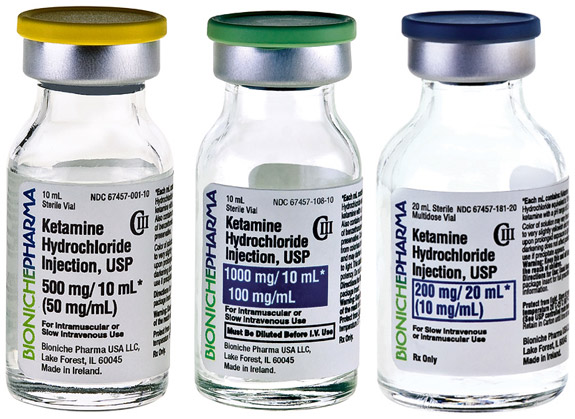
Ketamine is a type of medication used to induce loss of consciousness (anesthesia), produce relaxation More
Ketamine is a type of medication used to induce loss of consciousness (anesthesia), produce relaxation
Ketamine-categorized as a “dissociative anesthetic
Ketamine; Ketaject; Ketalar; Dl-Ketamine; Ketanest
Aneket, Hypnoket, Keta, Ketafast, Ketajet, Ketajex, Ketalar, Ketam, Ketamax, Ketmin, Ketriplin, Ketsia, Kmin, Taurket
2-(2-chlorophenyl)-2-(methylamino)cyclohexan-1-one
Parenteral absorption with a hepatic metabolism, excreted via urine.
1-4.5 mg/kg as IV, 0.5-2 mg/kg as IV infusion, 6.5 to 13 mg/Kg IM.
Anesthetic agent
Vivid dreams, hallucinations, confusion, and irrational behaviour. Increased muscle tone sometimes resembling seizures. Temporary hypertension and tachycardia. Hypotension, bradycardia, arrhythmias. Respiratory depression, apnoea, laryngospasm, diplopia, nystagmus, nausea, vomiting, lachrymation, hypersalivation, raised intraocular and CSF pressure, skin rash and pain at injection site.
Hypertension, history of cerebrovascular accident. Eye injury, raised ocular and intracranial pressure. Psychotic disorders.
Store at 15-30 ?
237.725
C13H16ClNO
6740-88-1